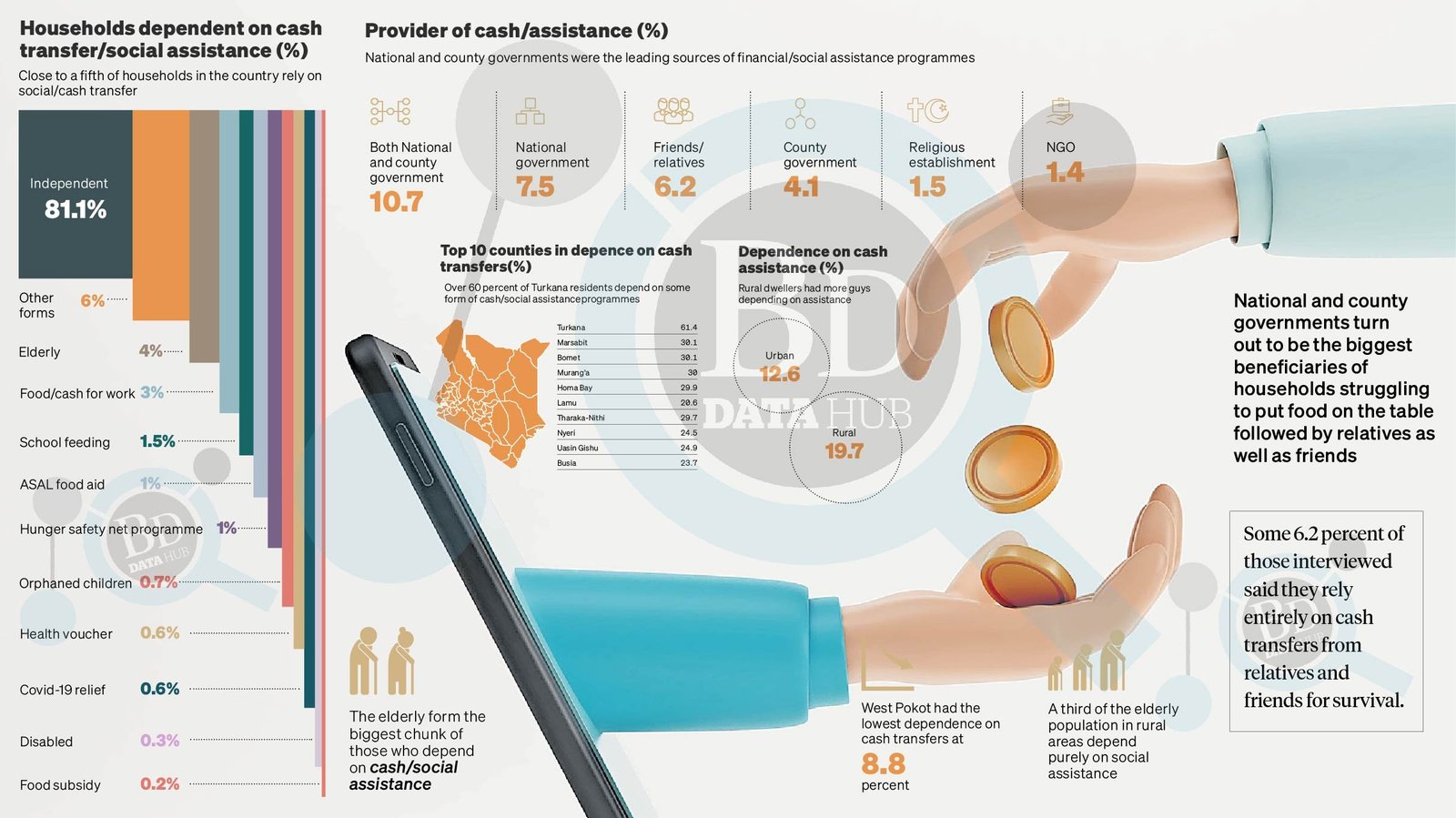[ad_1]
Economy
One in every five Kenyans depends on cash transfers or social safety nets
Thursday July 27 2023
GRAPHIC | STANSLAUS MANTHI | NMG
Close to a fifth of Kenyan households primarily rely on cash transfer programs or social assistance highlighting the additional burden on taxpayers, friends and relatives.
Data published by the Kenya National Bureau of Statistics (KNBS) in the Demographic Health Survey revealed that 18.9 percent of local households bank on some form of assistance to survive.
The highest dependence was on both national and county governments as 10.7 percent of the respondents noted they rely on both counties and governments for handout programs and social assistance.
According to the research, 6.2 percent of those interviewed said they rely entirely on cash transfers from relatives and friends.
Despite the programmes being aimed at uplifting those in need, the high reliance on other people or organisations such as government, churches or NGOs leads to financial strain on the host, which in turn affects the latter’s ability to save or invest any extra income.
“Social protection systems help individuals and families, especially the poor and vulnerable, cope with crises and shocks, find jobs, improve productivity, invest in the health and education of their children, and protect the ageing population,” said the statistics body.
The high reliance is happening at a time of economic hardships coupled with a high unemployment rate that stood at 13.9 percent in December last year and is likely to inhibit households’ attempts to jump out of poverty.
Senior citizens who survive on social programmes make up four percent of the entire country’s population.
Kenyans who do casual work for food and minimal wage account for up to three percent of the country’s households.
Rural areas reported the highest level of reliance on social programmes due to a higher concentration of the elderly compared to urban areas.
The survey findings noted that 19.7 percent of rural households survive on assistance compared to 12.6 percent.
The old age parachute programme by the government recorded the highest uptake in Vihiga county with 49.5 percent of households reporting they survive on the programme.
Further segmentation by county revealed that Turkana county, which has the highest incidence of poverty also had the highest dependence on cash transfer programmes at 61.4 percent followed by Marsabit at 30.1 percent.
West Pokot and Kisumu counties recorded the lowest reliance on cash transfer and social safety nets at 8.8 and nine percent respectively.
[ad_2]
Source link



